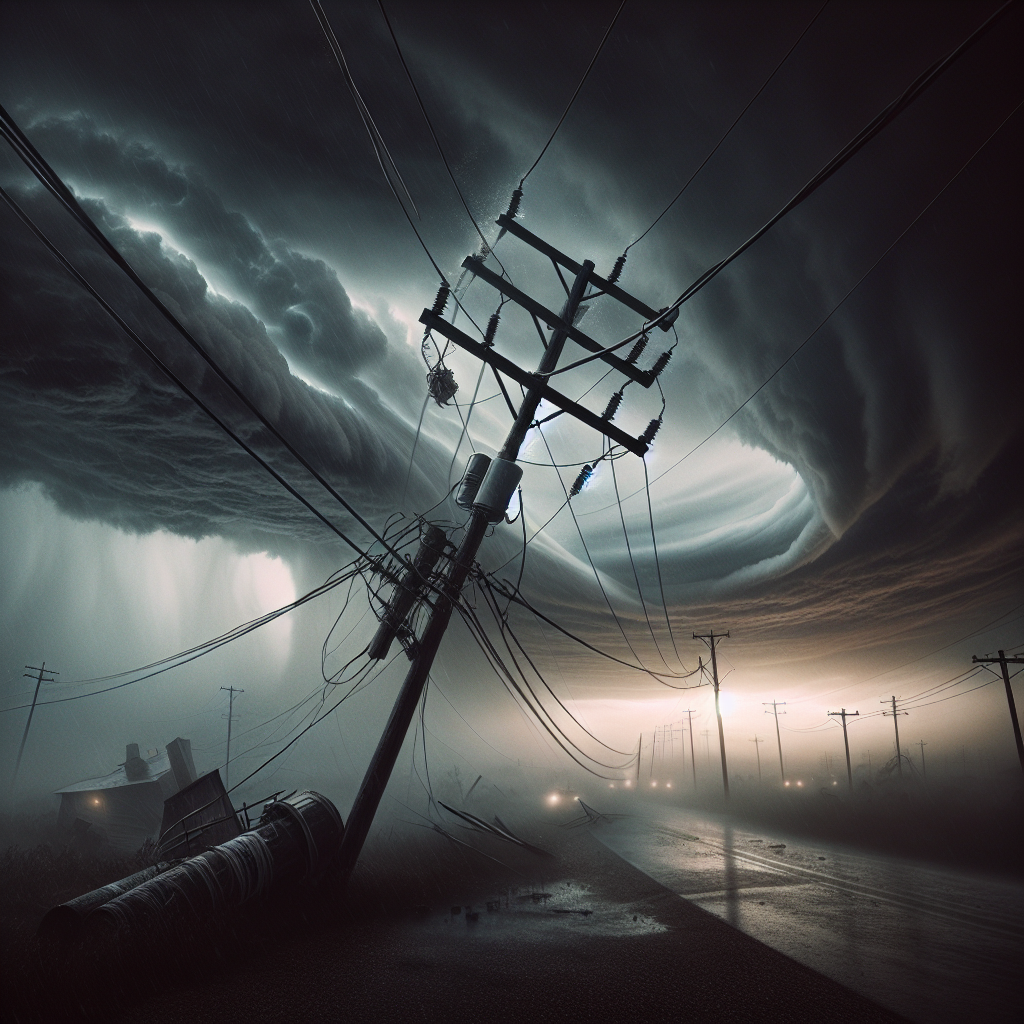As of 9 a.m., more than 1.5 million CenterPoint Energy customers were without power. A monitoring station in metro Houston recorded a gust of 80 mph Monday morning.
Beryl made landfall near Matagorda around 4 a.m. Monday as a category one hurricane, according to the National Weather Service.
The system brought 80 mile-per-hour hurricane-force winds to portions of the Texas coast early Monday. Minor to major river flooding can be expected as Beryl moves onto land.
At least one person is dead in Humble. A tree fell on a home, killing a 53-year-old man in the early hours of Monday, the Harris County Sheriff’s Office reported.
The man was reportedly “sitting in house with family, riding out the storm. An oak tree fell on roof and hit rafters, structure fell on the male. Wife and children unharmed,” tweeted Sheriff Ed Gonzalez.
By 9 a.m., more than 1.5 million CenterPoint Energy customers were without power.
A tropical storm warning remains in effect across Harris County early Monday morning. There’s an ongoing threat of dangerous storm surges, increasingly strong winds, and flash flooding, according to the weather service.
According to the Harris County Flood Warning System, areas of central Houston had already received up to 4 inches of rain by 5:45 a.m. Monday. In Friendswood, just southeast of Houston, nearly six inches of rain had already been measured.
The storm is expected to pass through the western half of Houston by 11 a.m. as wind speeds pick up. The system will exit Harris County as it moves north through Montgomery County, according to Space City Weather.
The storm will weaken later in the day as it moves further inland.
Houston TranStar cameras detected street flooding across the city. High water locations were detected on IH-69 Southwest Northbound at Dunlavy, Beltway 8-South Westbound before Almeda, and Westpark Tollway Eastbound at Beltway 8, according to TranStar.
City leaders on Sunday urged residents to stay off of the streets as Beryl pushes through the metropolitan area Monday.
“The less people on the road, the easier it is for us to do our job,” Acting Police Chief Larry Satterwhite said during a press conference Sunday. “The less chance that we will have to perform a rescue.”
“If you do have to go out on a roadway in a vehicle and drive around, if you see a body of water on the roadway, do not drive through that thinking you are going to get through that.”
The White House said Sunday that the Federal Emergency Management Agency had sent emergency responders, search-and-rescue teams, bottled water, and other resources along the coast.
Some coastal cities called for voluntary evacuations in low-lying areas that are prone to flooding, restricted beach camping, and urged tourists traveling on the Fourth of July holiday weekend to move recreational vehicles from coastal parks.
Voluntary evacuation orders were issued in parts of Brazoria and Galveston counties. Quintana, a town in Brazoria County, issued a mandatory evacuation order.
Lt. Gov. Dan Patrick, who is acting governor while Gov. Greg Abbott is traveling in Taiwan, issued a preemptive disaster declaration for 121 counties.
Beryl earlier this week battered Mexico as a Category 2 hurricane, toppling trees but causing no injuries or deaths before weakening to a tropical storm as it moved across the Yucatan Peninsula. The system crashed through the Caribbean before that, killing 11 people.
Several flights out of Houston Hobby Airport were canceled Monday.
“As the storm approaches and people plan to stay indoors and safe from the storm, we want to remind everyone that our airports are not equipped to serve as storm shelters,” according to the Houston Airport System. “We lack the supplies and staff to accommodate people seeking refuge during the storm.”
Travelers should check with airlines for the latest updates and options for rebooking flights.
Beryl is the 10th hurricane to hit Texas in July since 1851 and the fourth in the last 25 years, according to Colorado State University hurricane researcher Phil Klotzbach.
This is a developing story.
